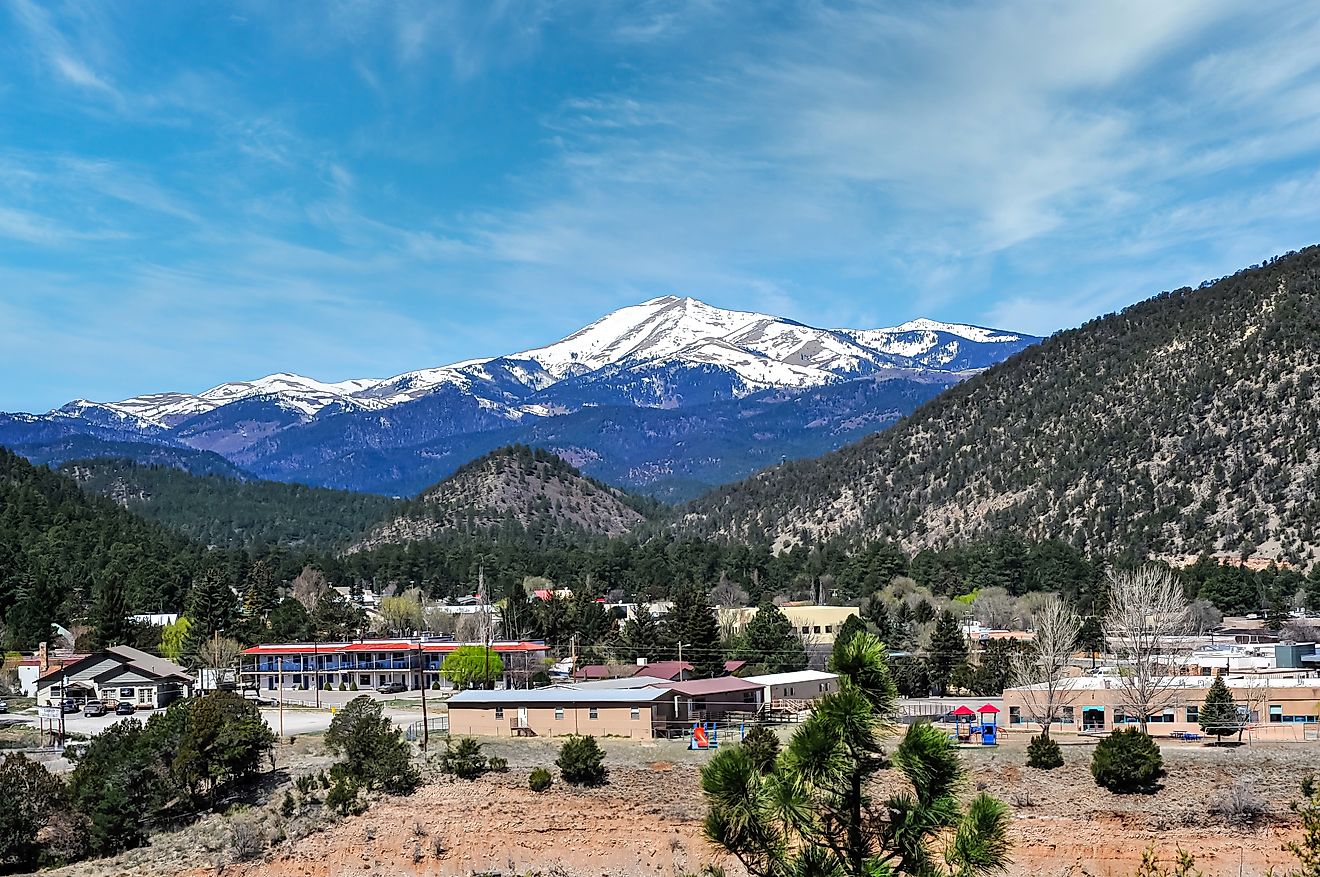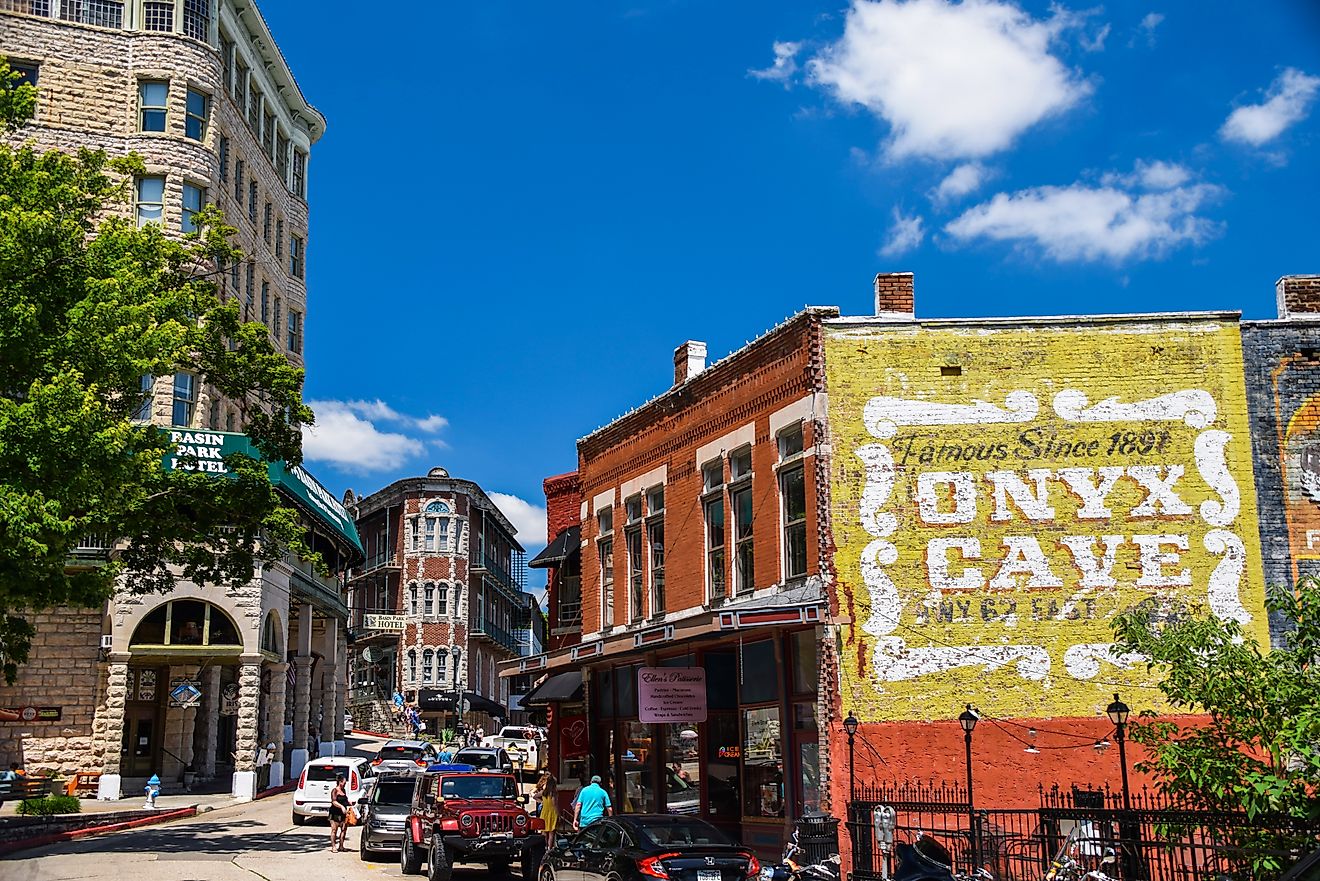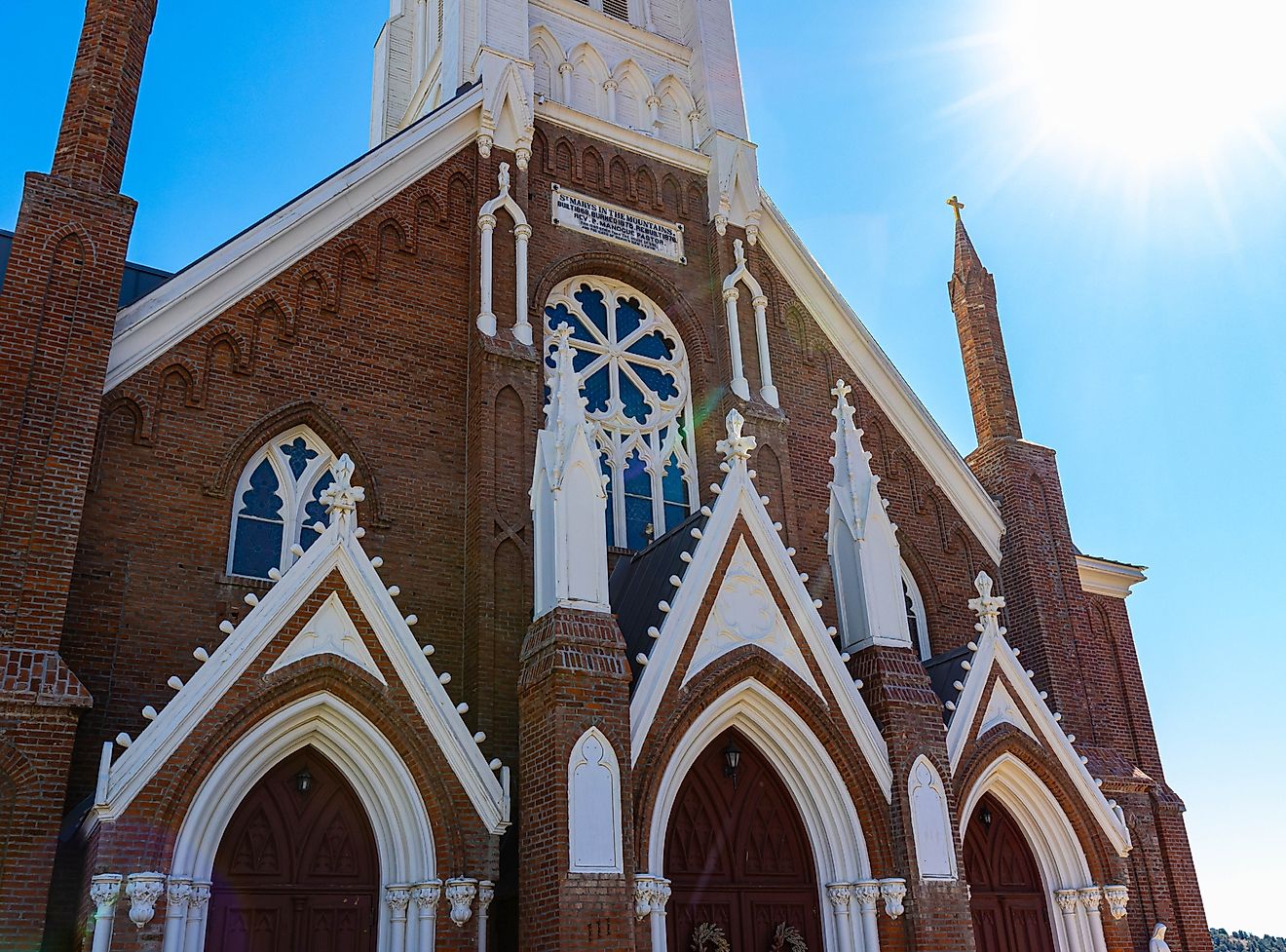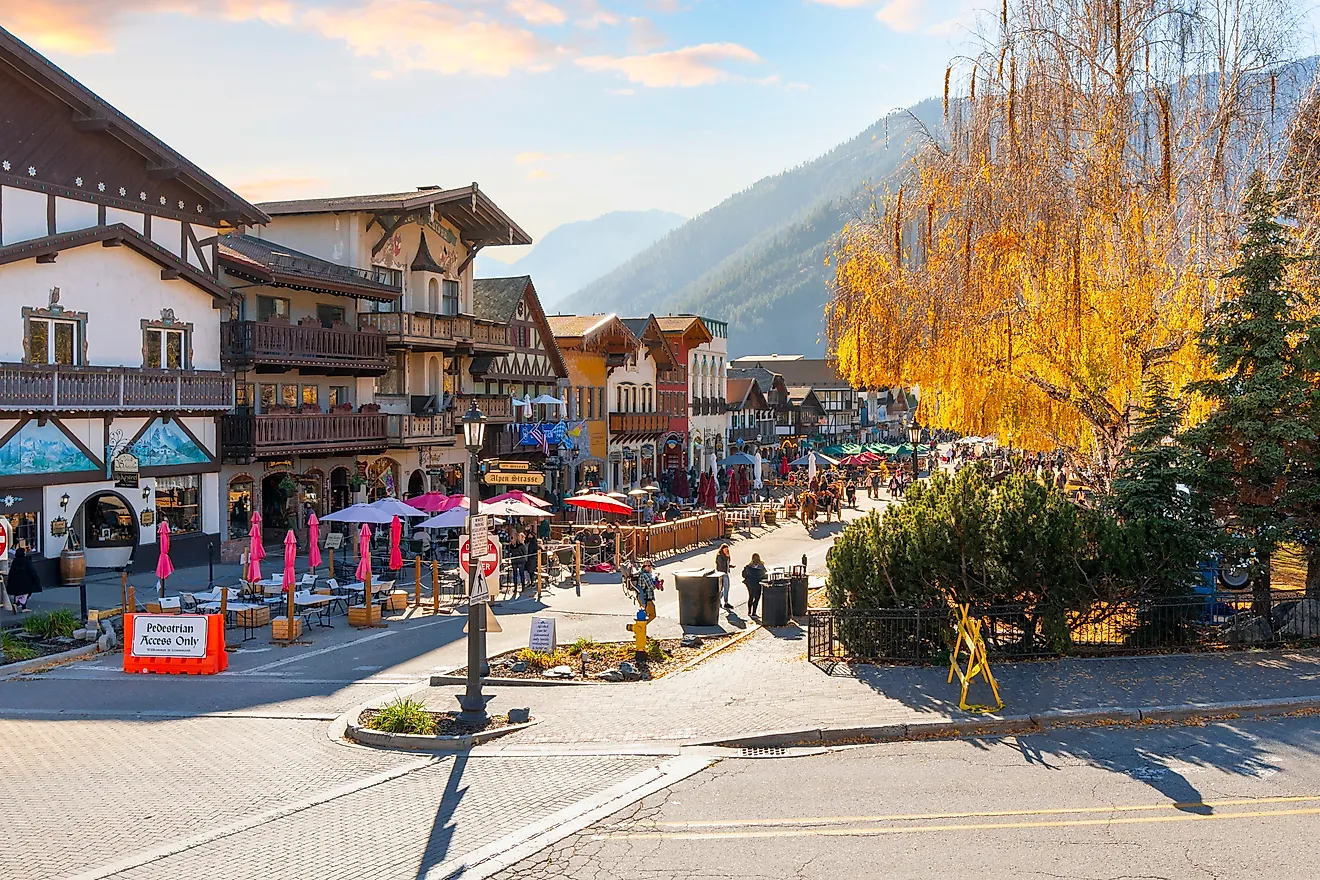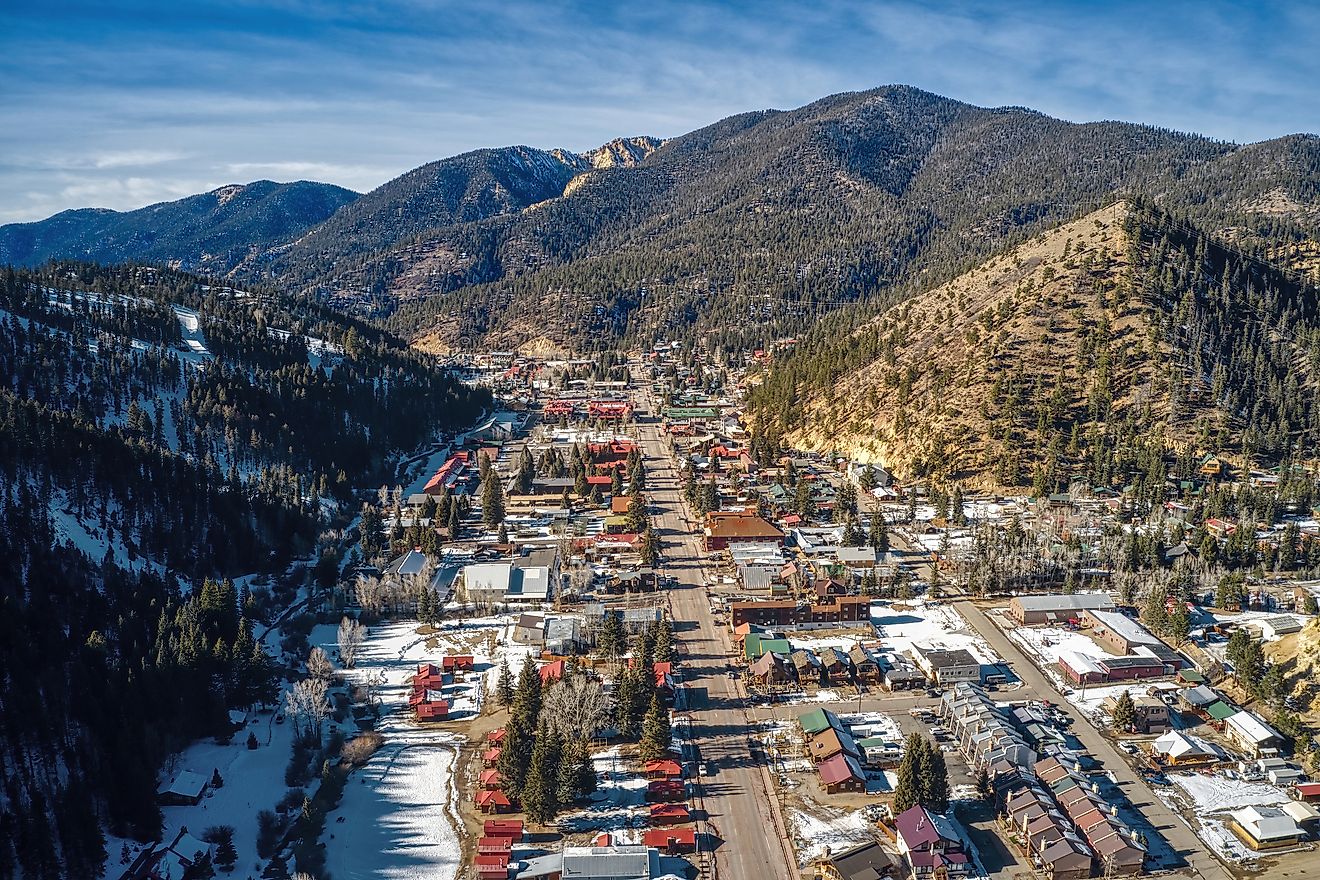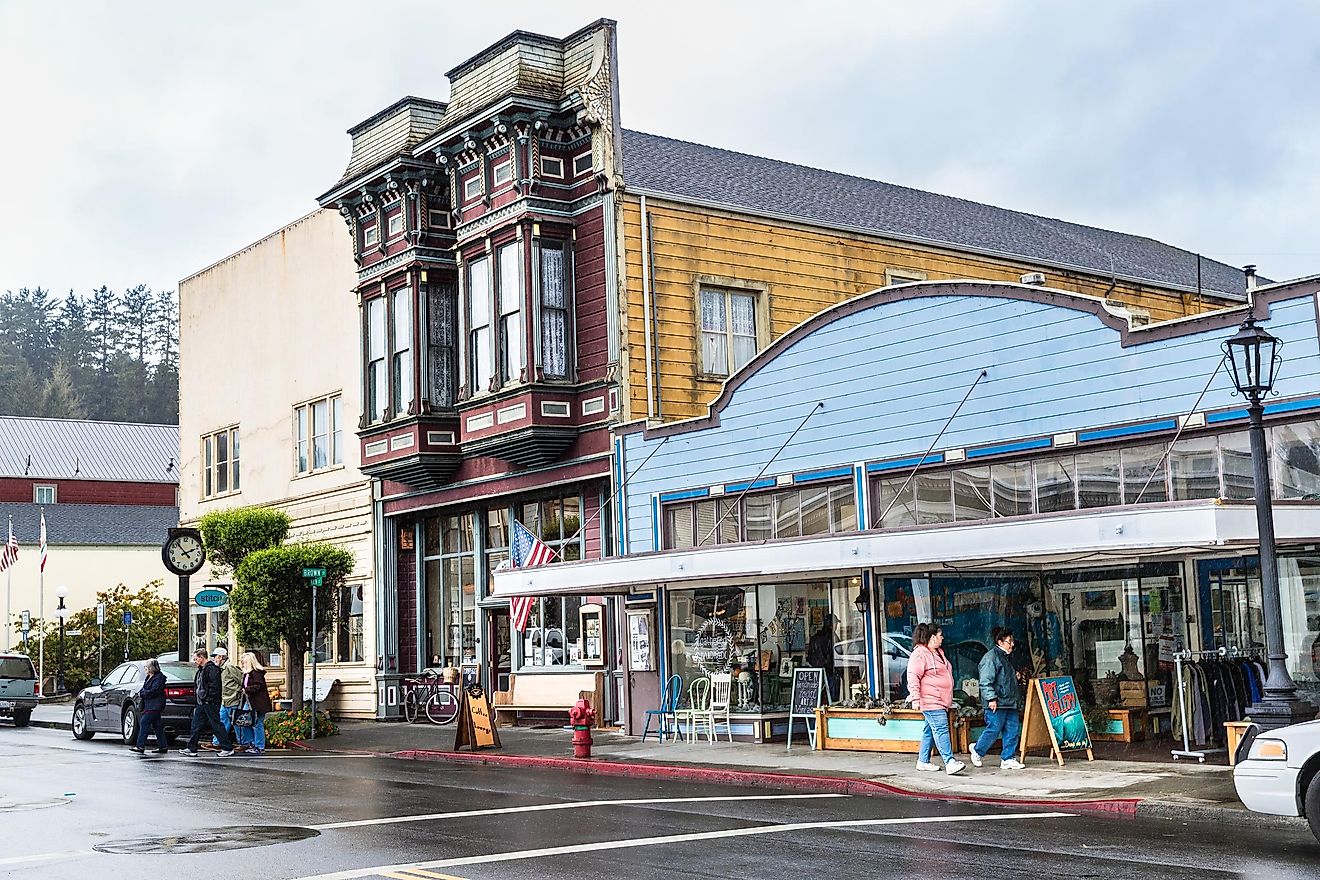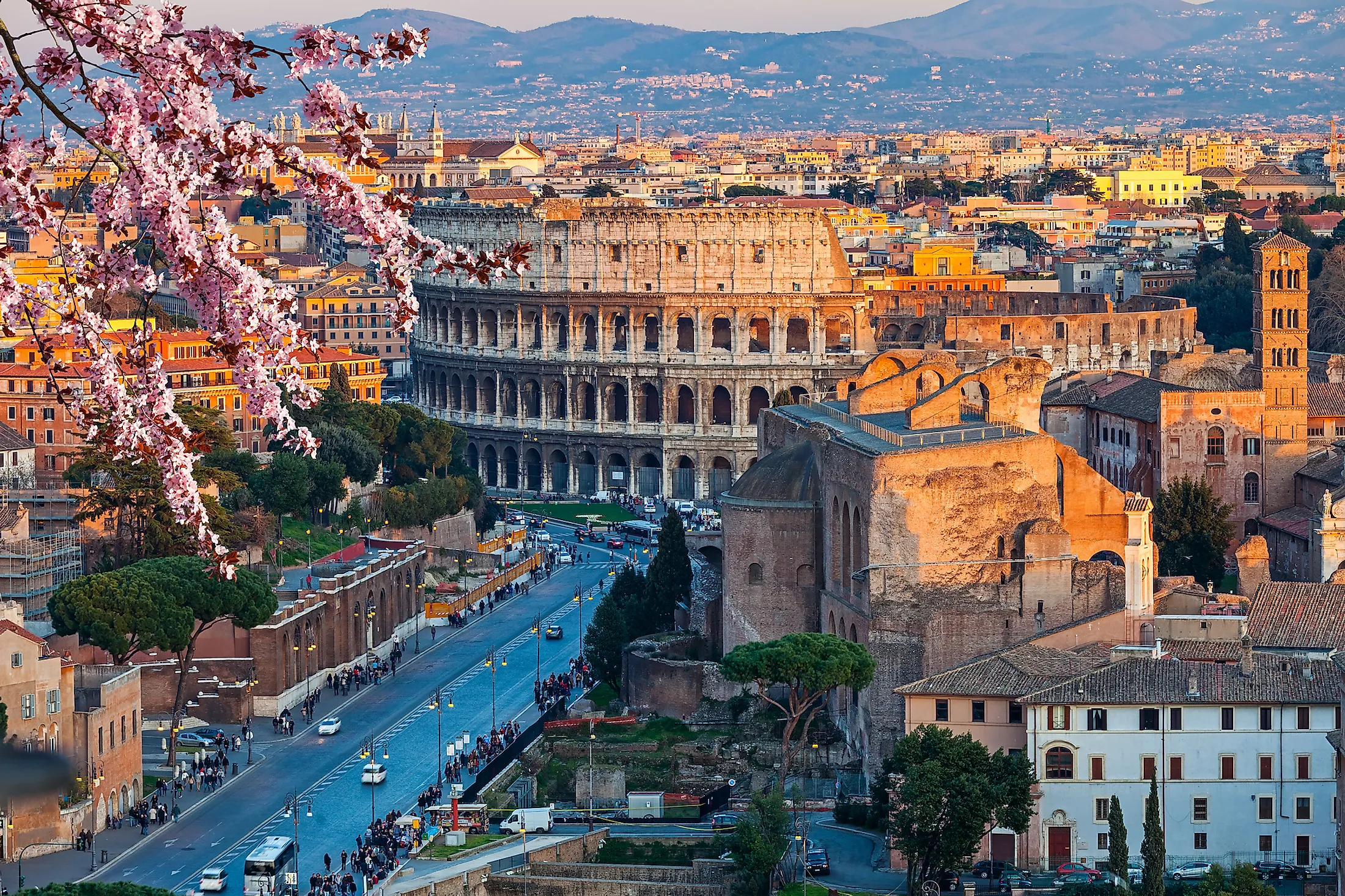
The Colosseum - One of the Seven Wonders of the World
The Colosseum is set on the east bank of Rome's river Tiber that crosses the city. It is under a kilometer northeast of the Stadium, just over kilometer east of the Capitol, and east of the ancient Roman Forum, the location of most important buildings, where the population would gather on the large square. The Forum was also the place where people would get married, hold big parties and community meetings, while living in close proximity.
Sitting in the heart of the main avenues in Rome, the capital of Italy, has caused main degradation to the Grand Amphitheater from the exhausts discharge from the millions of vehicles, with preventative measures against pollution getting taken, only recently. The exact address of the Colosseum is Piazza del Colosseo, 1, 00184 Roma RM, Italy.
Origin Of The Colosseum
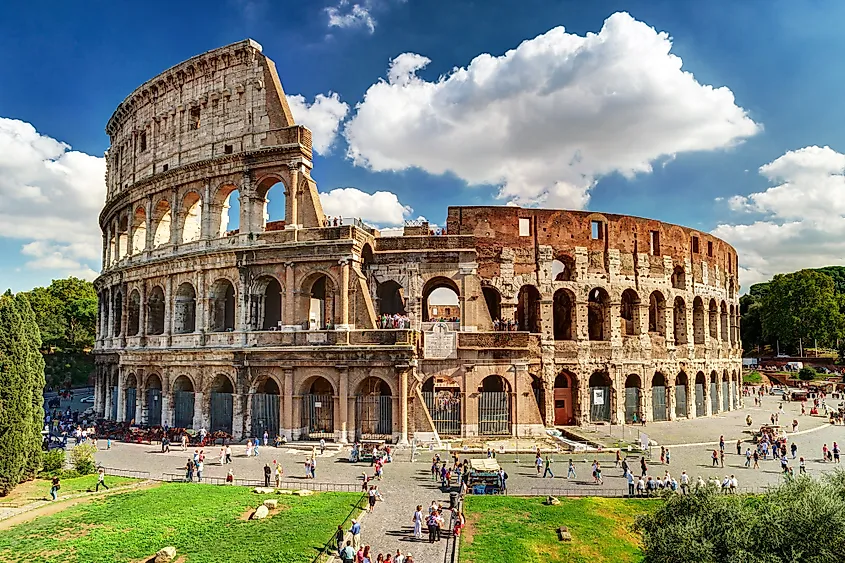
The origin of the Colosseum dates all the way back to the great fire of 64 AD, which destroyed much of Italy's capital. Following the event, the depressed Emperor Nero, wanting to cheer up and feel powerful again in the most flamboyant way, ordered a construction of a grand palace for himself in the area that incurred most damage. The Romans were unhappy, believing that the decision was selfish upon also experiencing the tragedy of the fire, themselves. Nero's misrule and misuse of power also led to multiple civil wars.
After four different emperors unsuccessfully replaced Nero who committed suicide in 68 AD, Emperor Vespasian ruled for 10 years, from 69 to 79 AD, along with his sons, Titus (from 79 to 81) and Domitian (from 81 to 96). His prime investment was to tear down the palace complex, and order the construction of a grand amphitheater for public entertainment, on an artificial lake in the city. This initial gesture to focus on public welfare was followed by shifting the power away from the roman court, and restoring the authority of the Senate.
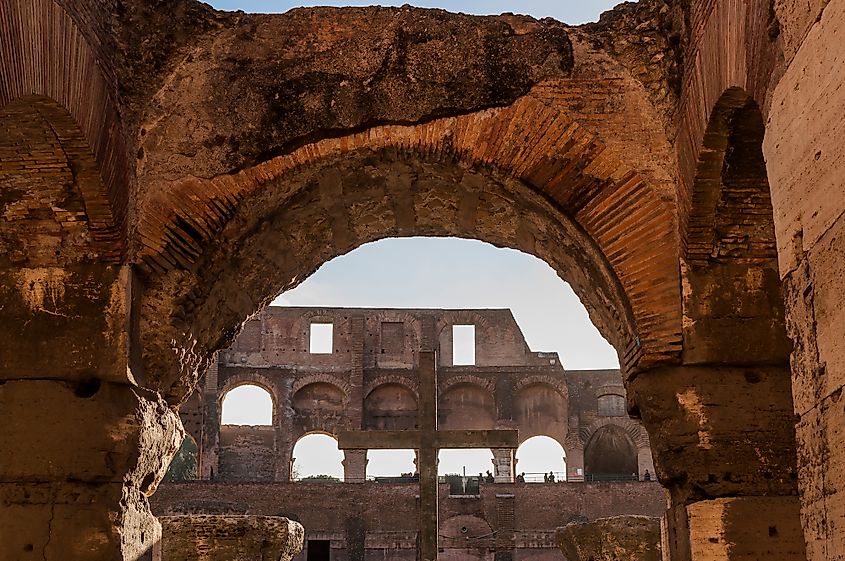
Commissioned as a gift to the Roman people by the Emperor Vespasian of the Flavian dynasty around 70-72 AD, it was officially opened in 80 AD by Titus, Vespasian’s son, as the Flavian Amphitheater, following the infamous eruption of Vesuvius 79 AD that annihilated Herculaneum and Pompeii. The arena of the theater was used for gladiator battles, epic hunts where humans would be pitted against wild animals, gruesome executions of prisoners of war and criminals, and a festival including 100 days of games. It would function continuously for gladiatorial combats and wild animal fights for some 400 years.
Recent History
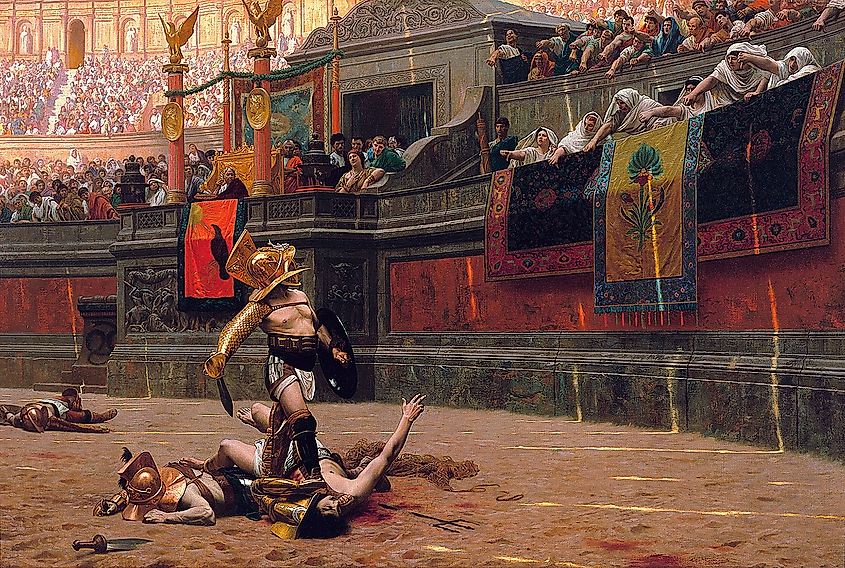
The struggles of the Western Roman Empire, as well as the growing public disinterest of the gladiator spectacles put an end to Colosseum's period of fame, for the meantime. The last gladiator battle was recorded in 435, while the human-versus animal hunts continued for another century. Mistakenly, some believe that the battles at the Colosseum ended due to the emperors' growing passion for Christianity, when, in reality, it was the cost to upkeep the amphitheater and to gather the materials and participants for the spectacles that the already struggling Roman Empire could not handle.
At one point or another since seizing as an entertainment venue for the ancient Romans, the Colosseum has functioned as a cemetery, a place for worship, living quarters, an artisans’ and merchants’ workshop, the home of a religious order, and a defense castle. Neglected after that with two thirds, becoming destroyed by lightning, earthquakes, and even vandalism, including the marble seats and decorative elements, the Colosseum, dismally, began to function as a source of building materials in the 18th century. Some of the projects that were built out of it include the St. Peter, St. John Lateran, the Palazzo Venezia, as well as the defense forts on the Tiber River.
At the same time, in the early 18th century, various popes wanted to conserve the sacred arena as a Christian site, following the speculation that early Christians were killed for their faith at the Colosseum. Nevertheless, it wasn’t until the 19th century that, putting notable effort, Pius VIII, started the real preservation of the infamous landmark.
Construction Of The Colosseum
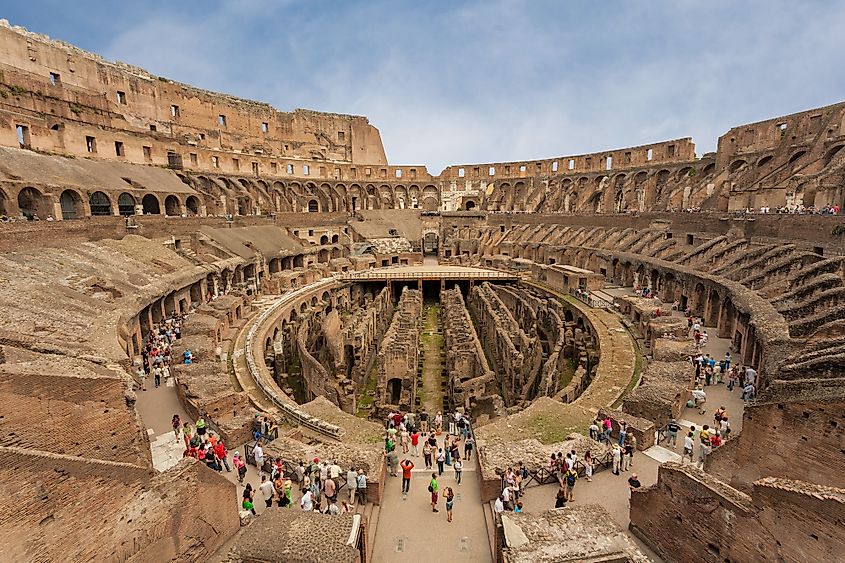
Since Vespasian died before the completion, the construction, taking only eight years for such a grand project overseen by the Roman engineers and craftsmen but done largely by Jewish slaves, was under Titus and his brother and successor, Domitian, in the final stages. With an estimated 60,000 to 100,000 employed in the construction of the Colosseum, the use of slave labor was due to the aftermath of the first Jewish-Roman war. Following the abolishment of the Jewish Temple in Jerusalem, many of the provincial inhabitants became slaves to be taken to Rome solely for this reason.
Spectators And Other Facts
It is likely, that the name for the amphitheater that is soon to be 2,000 years old in 2080 was erected for the colossal bronze Emperor Nero statue, modeled on the Colossus of Rhodes and once sitting next to the building. According to archaeologists, the oval-shaped, 189 meters long, 156 meters wide, 48.5 meters tall, and with a total surface area of 6 acres, theater, also had drinking fountains and latrines for the comfort of the ancient spectators.
The building that would fit between 50,000 and 80,000 spectators was constructed out of some100,000 cubic meters or travertine stone, mined from the quarries in Tivoli only 20 miles away, to be then reinforced with thousands of iron clamps. The facade of the amphitheater has three levels, of Doric, Ionic, and Corinthian columns, containing 80 arches each, which helped guide the spectators to their seats. The 31 columns remaining today draw tourists the most to visit the Colosseum with over 4 million, every year, coming to see this number one attraction in Italy.
Hypogeum or Underground, located underneath the Colosseum comprises of an elaborate network of tunnels and chambers for human and animals participants in battles prior to entering the stage, via one of the 80 up-shoots. Another extensive network of trap doors was designated for the scenery elements to be resealed during the show. Lions, tigers, wolves, bears, leopards, wild boar, elephants, hyena, buffalo, hippopotamus, crocodile, and giraffe were all used in the shows to either kill, or be killed by gladiators. With millions of animals dying during the battles, some believe that the Colosseum is to blame for the eradication of certain local species.
More On Gladiators Of The Colosseum
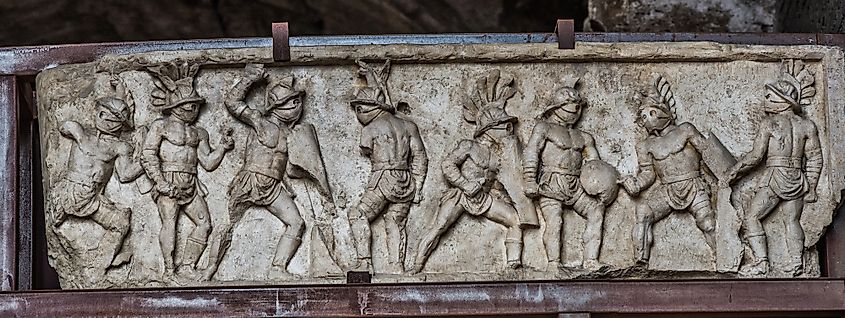
The gladiators that would fight each other, against animals, as well as in mock naval engagements were generally the condemned criminals or prisoners of war, working as slaves. These were highly organized spectacles, with the fighters categorized by size and fighting styles. Experience, past record, and various fighting styles also determined the match's contenders, while most successful gladiators had a chance of being recognized as a celebrity in ancient Rome.
Making sure that the rules were followed, the referees also kept score, while the doctors at the scene ensured that not all battles had a fatal outcome. Due to these regulations, there were gladiators who made a long-time career without dying, with the gladiator battles being not as chaotic or bloody as one often imagines. Still, it is believed that around 400,000 people died during the shows over 350 years.
The first restoration of the Colosseum took place only in the last twenty years, while for its grandeur and tumultous history, the theater remains of public interest for tourists from all over the globe, as an iconic symbol of Rome. In fact, the Colosseum features different exhibitions dedicated to all the various aspects of the ancient Roman culture. The fact that today the Colosseum also lacks some significant architectural elements, including part of the arena's facade, has cured the curiosity of many, regarding the hidden layers of the original design, being unveiled.


